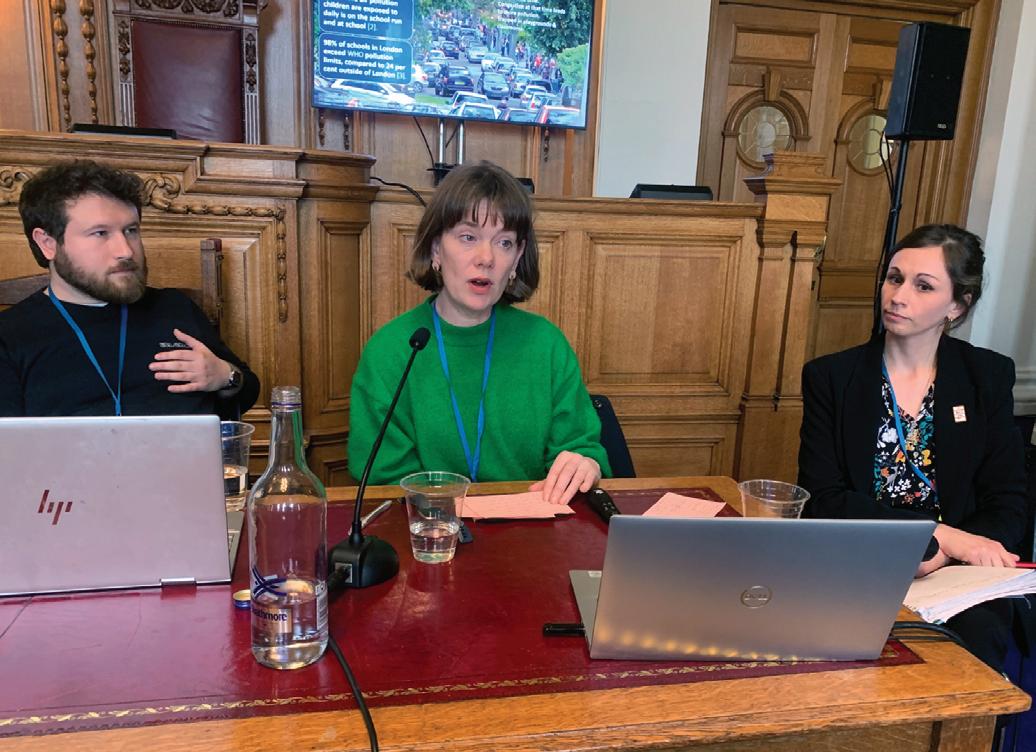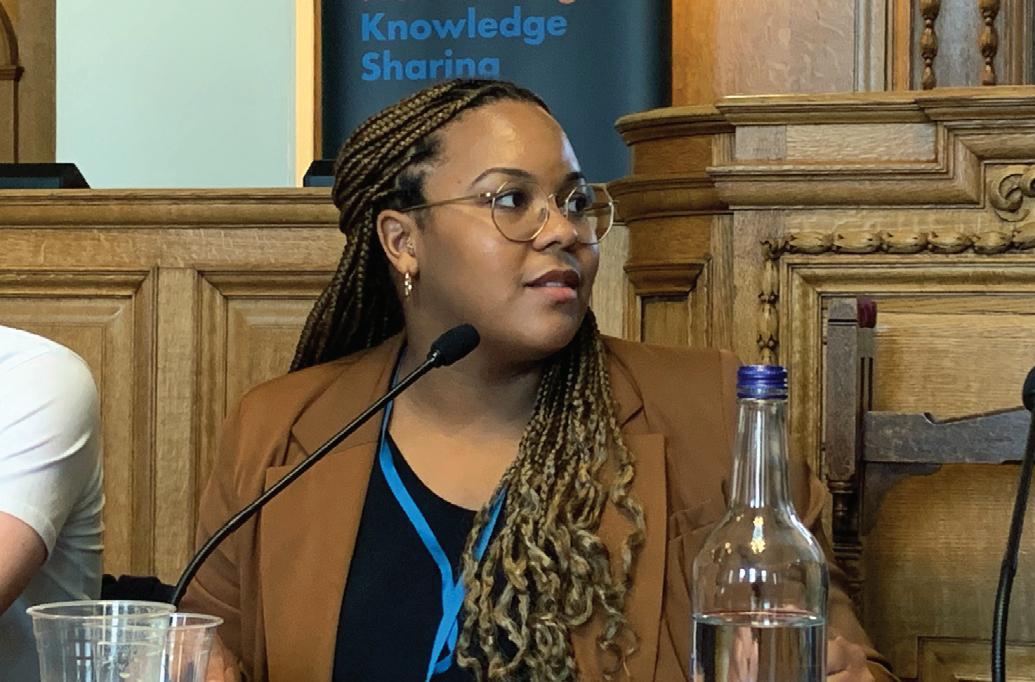
2 minute read
Learning together
School Streets 2023 shared best practice on transforming the school run www.landorlinks.uk/school-streets
School Streets offer a way of reducing the dominance of the car as the means by which children travel to and from school, making space for families to explore options such as walking, cycling and public transport.
A School Street is a road with a temporary restriction on motorised traffic during school drop-off and pick-up times. The restriction applies to both school traffic and through-traffic. Schemes will enable only residents and essential service vehicles to enter and leave the streets covered, with permit schemes sometimes enforced by patrol officers or cameras.
Over 200 people attended the inaugural School Streets conference, organised by Landor LINKS and hosted by Lambeth Council on 21 February.
The event at Brixton Town Hall saw councillors, local authority officers, campaigners, consultants and specialist contractors share their experiences of setting up and running School Streets.

The day’s presentations can be downloaded on the official website.
Make an active choice
The School Streets conference explored the policy and practical aspects of encouraging walking and cycling
Lambeth Council’s Cllr Rezina Chowdhury, cabinet member for sustainable Lambeth and clean air, opened the School Streets 2023 conference.
Looking back at the day, Cllr Chowdhury said: “I was delighted to open the inaugural School Streets conference which brought together professionals from a range of disciplines, showcasing best practice and offering practical guidance through excellent and thoroughly engaging panel discussions and workshops.

“During the first session we looked at the challenges presented on the ground when implementing School Streets. We know they effectively address the congestion, road safety and air quality concerns that many schools experience. Monitoring of schemes has revealed how they are enabling children and families to safely walk, wheel, scoot or cycle to school. And by making active travel possible for everyone, they help contribute to efforts to tackle the health crisis and climate change.
“As awareness of new schemes grows, the case for School Streets becomes ever more compelling. Not only do they improve the quality of people’s lives locally – they make a difference for entire communities. But the success of a scheme depends on how consultation, implementation, enforcement, and monitoring are conducted.”
The opening session was chaired by Lucy Marstrand-Taussig, policy lead at Transport for London. She said: “The huge appetite for creating more School Streets came through loud and clear from the speakers and delegates in the session I chaired.


“It wasn’t just the fact the event was sold out – and great to do an event in person – but so many delegates from across the UK are saying they want streets which children can safely use to get to school independently.
“They are seeking ways to cut air pollution and road risk, using planters, bollards or camera enforcement. In isolation, School Streets don’t solve these problems – you need a wider plan for the school catchment, especially for secondary schools – but they are part of the solution.”
Session 1: Paving the way for School Streets
Top tips on consultation, design and implementation of new schemes
Panellists
• Lucy Marstrand-Taussig, design policy lead for streets, Transport for London (chair)
• Jenny Babey, project manager behaviour change and engagement, Sustrans
• Suzy Harrison, active travel manager, London Borough of Lambeth
• Kate Jack, smart mobility lead, Stantec
• Habib Khan, founder and director, Meristem Design
Running School Streets
Session 2: Smooth operations
Running and enforcing School Streets. Getting the right balance between cameras and softer measures to bring about behaviour change
Panellists
• Keith Hanshaw, client services director, Marston Holdings (chair)
• Idowu Ereoah, traffic enforcement manager, London Borough of Haringey
• Andrea Jones, director of strategic accounts, Marston Holdings
• Adi Roser, senior sustainable transport planner, London Borough of Hackney


Analysing School Streets
Session 3: Examining the data
How effective are School Streets at encouraging active travel, and improving road safety and air quality? And do they really improve people's quality of life?

Panellists

• Tanya Braun, director of policy and communication, Living Streets (chair)
• Nicola Mastini, principal consultant, Smart Transport Hub
• Claire McDonald, school lead, Mums for Lungs
• Mahalia Sterling, principal city planner, Transport for London

• Asa Thomas, researching doctorate on School Streets, University of Westminster










